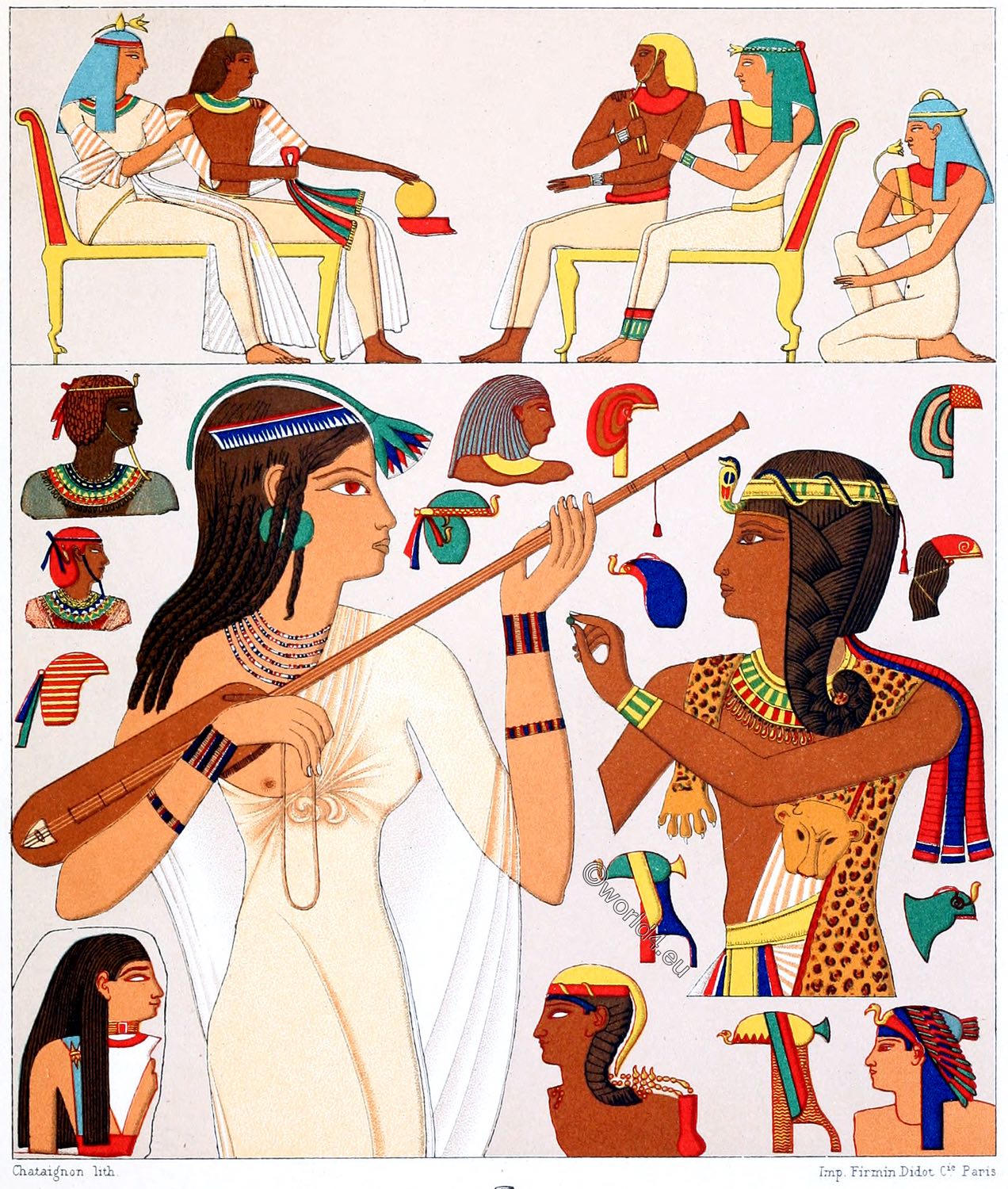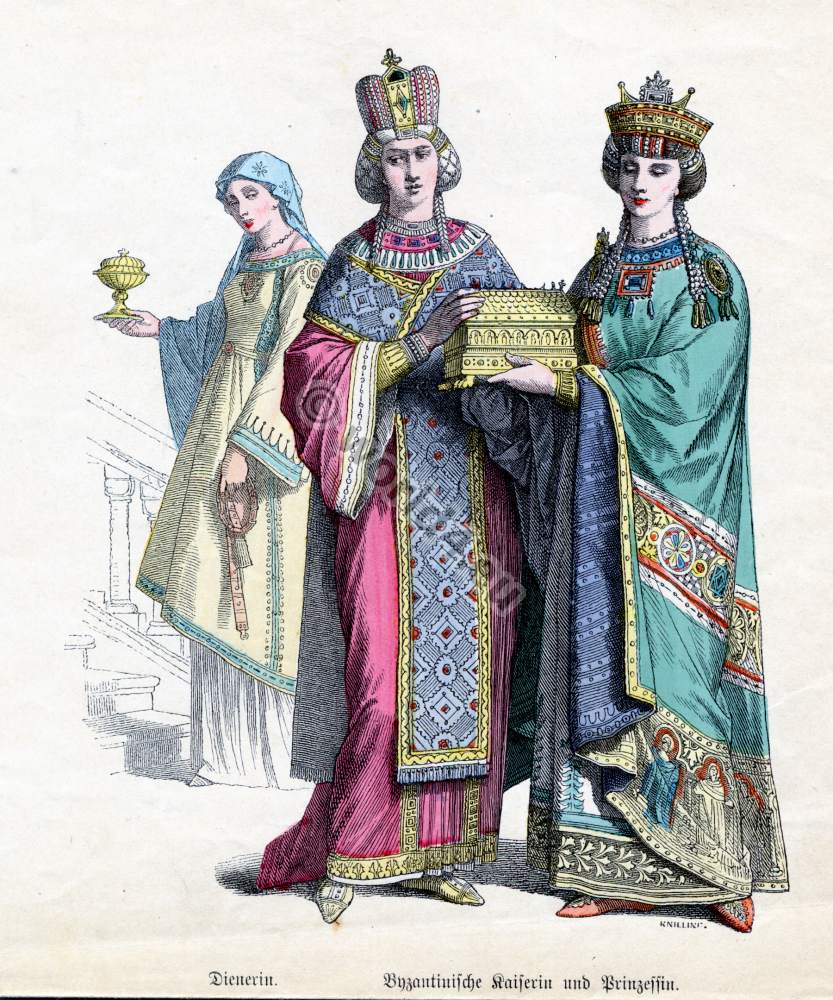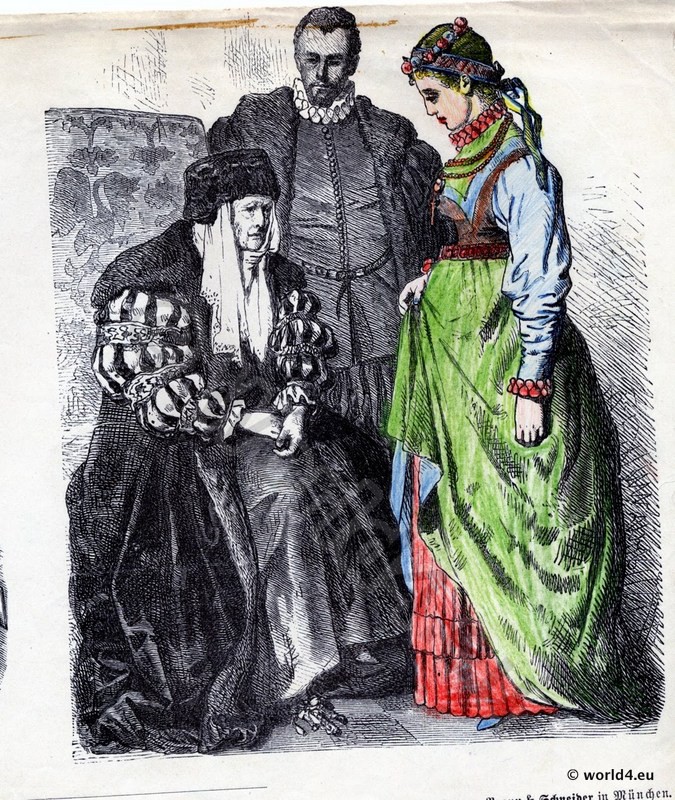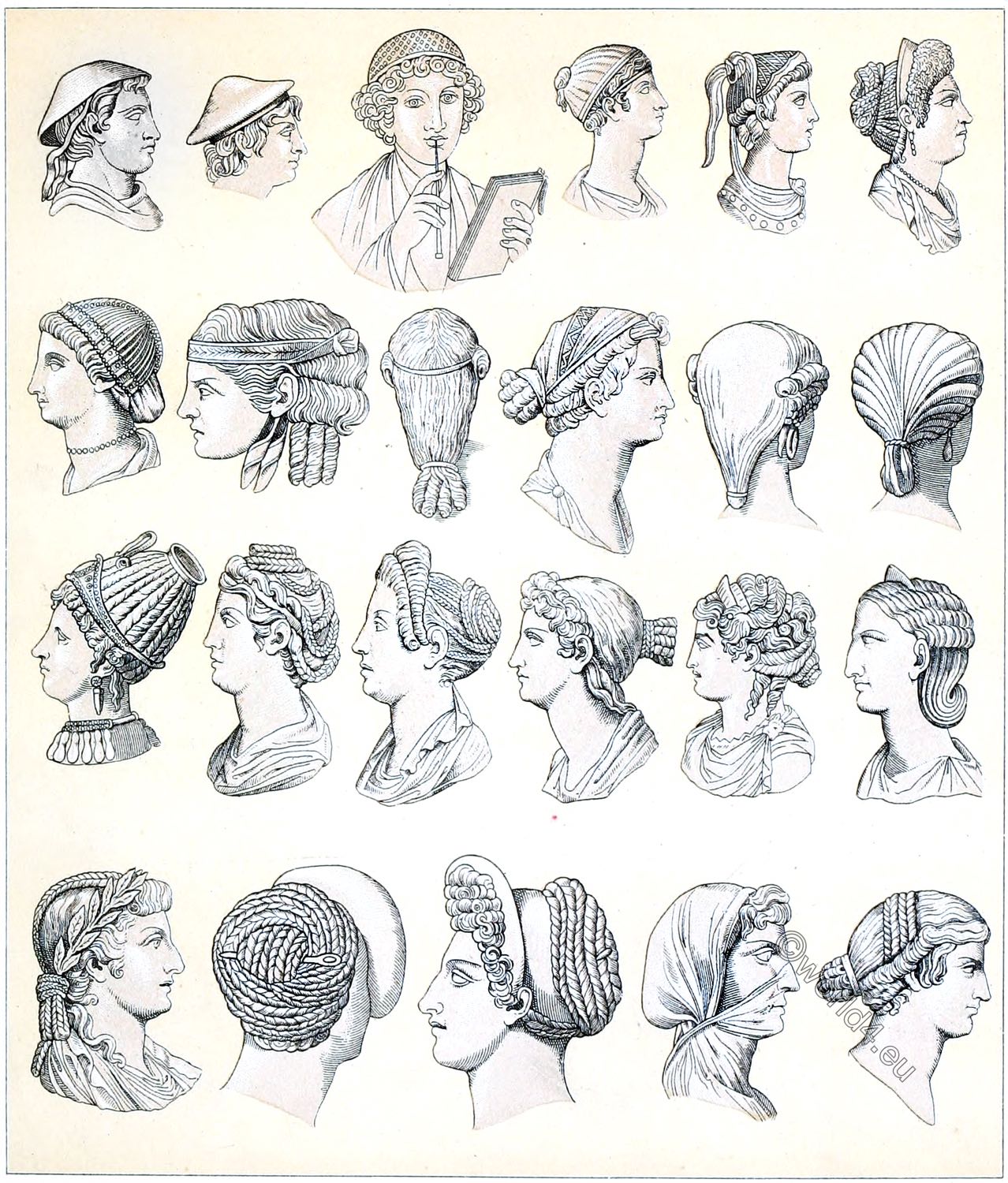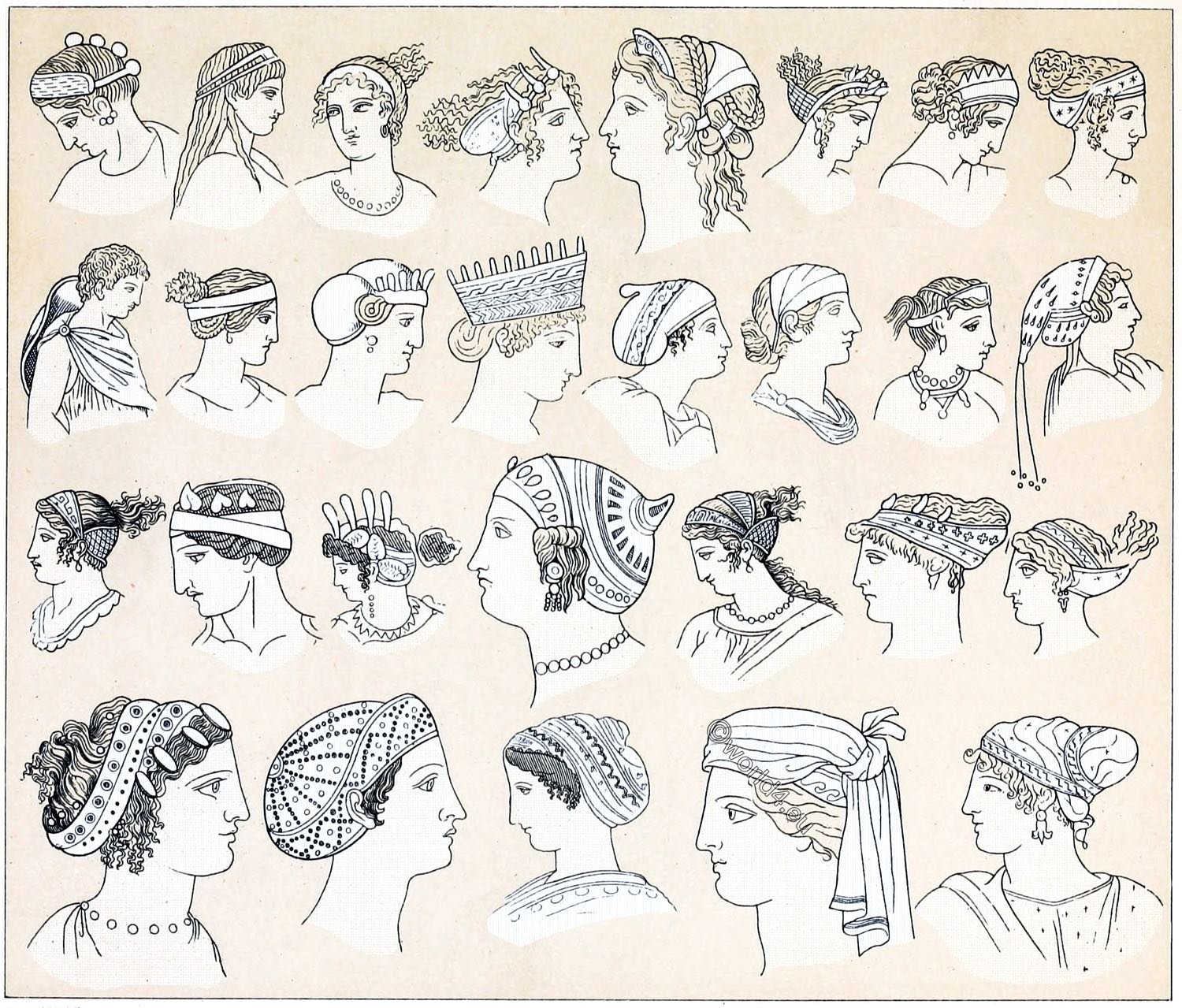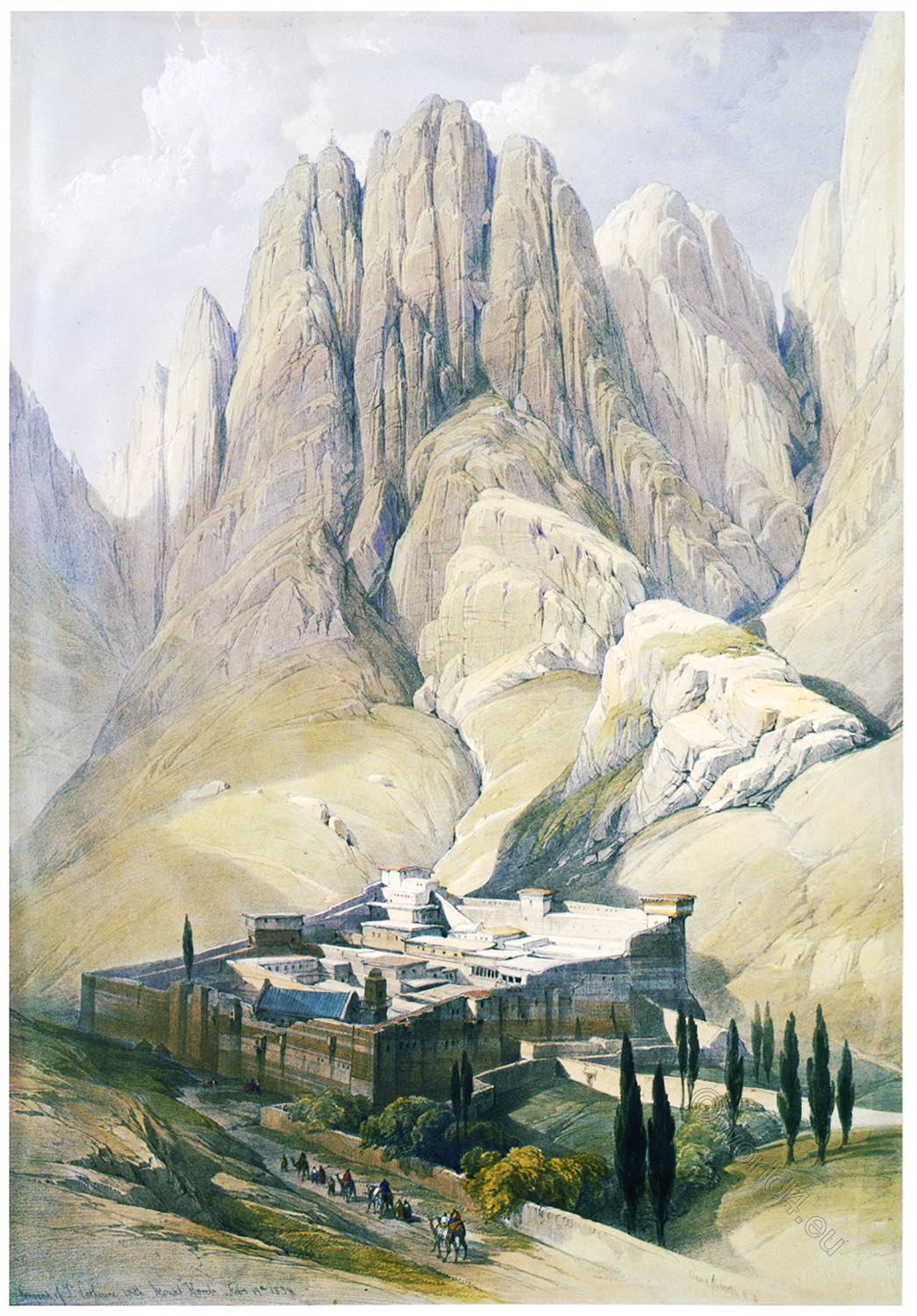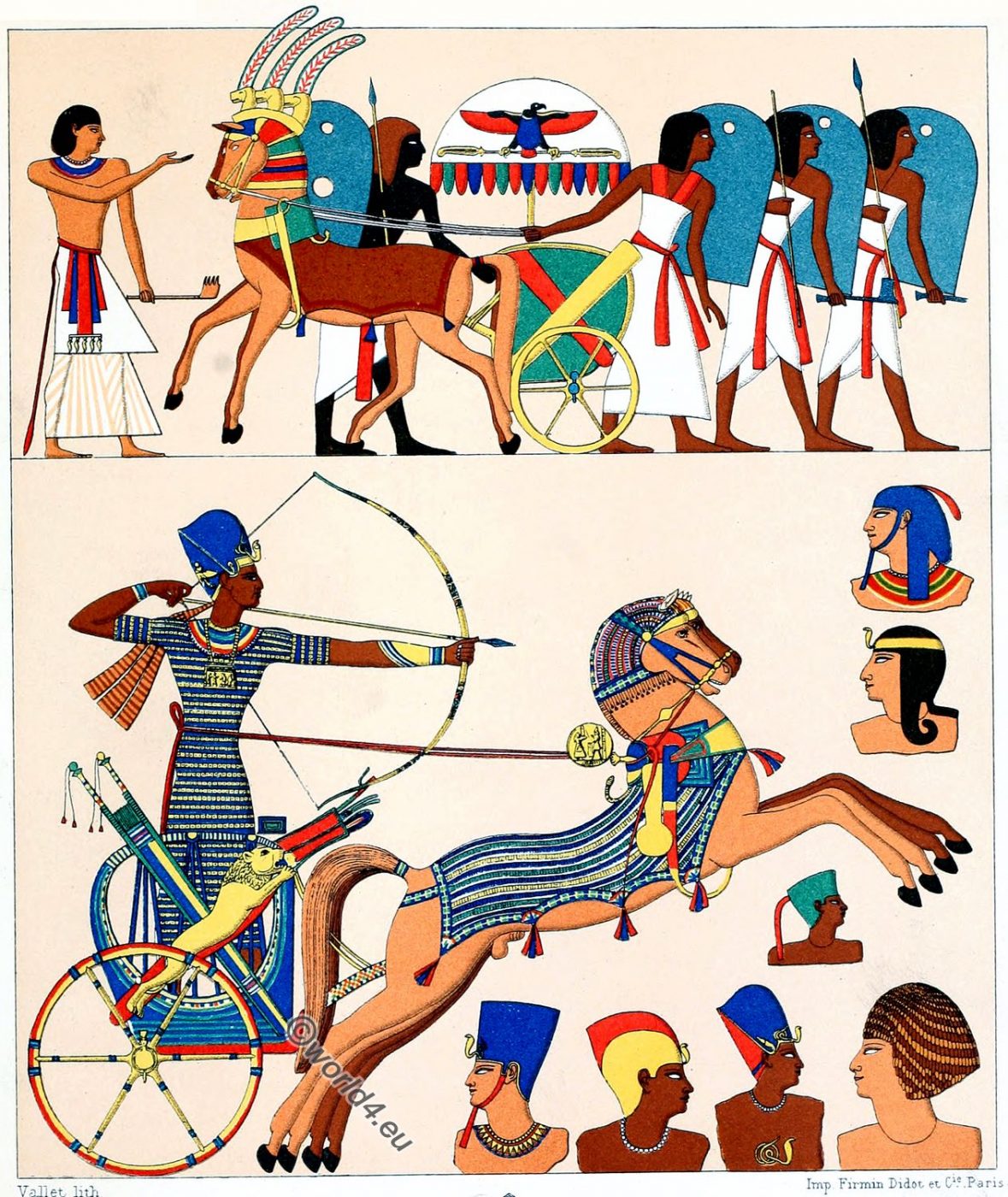
1 2 3
4 5
7
8 9 10 11
EGYPT. WARRIOR COSTUMES. HEADGEAR AND VARIOUS COSTUMES.
The representations on this panel are taken from Upper Egyptian wall paintings. The king shooting the bow on his war chariot is Ramses the Great, called Sesostris by the Greeks, who lived in the 9th century B.C. Ramses wears a helmet, which is decorated with the Uraeus snake and with metal strips. Ribbons fall on his neck to protect him from the sun. His body is dressed in a long armoured shirt made of metal plates sewn onto a leather skirt. His left forearm is covered with a metal cuff to protect him when shooting. He wears a six-rowed collar and a breast ornament of sheet gold hanging from a chain. The bow of the pharaohs and core troops seems to have been made of bronze.
The tip of the arrow was of bronze or iron. The war chariot, pulled by two horses, was open at the back, more rarely also at the sides, as in our picture, but where strong straps held the upper bow together with the lower part. Presumably the carriage itself and the wheels with the spokes were also made of bronze. The quivers with the arrows and the containers for the whips etc. are attached to the wagon on the right of the driver. The horses, jumping in wild gallop, belong to the beautiful breed which still exists in the Dongola region (Dunqula, Sudan).
Usually the charioteer had a driver beside or behind him. In our picture, the pharaoh had the reins around his waist. The horses wear a cap, through which the ears are put through, and a saddlecloth, which is fastened in front at the bow and behind at the tail strap. The horse’s tail itself is in a ring. In order to prevent the horses from moving apart, they run in a metal bracket that goes from the neck around the belly. Since the Egyptian army had no cavalry, the chariot fighters were of great importance.
On the chariot No. 2 the body is also closed at the sides and also equipped with a quiver and a case for the whip. The horses harnessed in a similar way carry large feathered bushes on their heads. The reins are drawn through rings. On the chariot is a field sign, which usually carried the symbol or the human or animal form of a god. In our picture it is a vulture holding golden victory palms in its claws. Vultures and sparrowhawks were the symbol of supreme power. The warriors who accompany the chariot are among the heavily-armed. They carry a large metal shield, a lance in their right hand and a short axe in their left. The shield has an opening for the eyes. They also wear a white tunic, which is fastened with a belt.
No. 1. Egyptian, incense-burning.
Nos. 5, 6, 7, 8, 9, 10, 11: Wigs. Braided hair with diadems, headgear of stuff or metal. Some are decorated with uraeus snakes, the insignia of royal dignity.
No. 1 Bas-relief from the porch of the palace of Medinet-Abu (Thebes).
No. 2, 3rd bas-relief from Abu-chek; 19th dynasty.
No. 4. fragment from the battle of Ramses against the Bactrians on the banks of the Orontes. From the Ramesseum (Thebes).
No. 5, 6, 7, 8, 9, 10, 11. From various reliefs of the ruins of Karnak.
(After the Déscription de l’Égypte, Paris 1809 1828. 22 Bde., after Prisse d’Avesnes, Histoire de l’art égyptien d’après les monuments, Paris 1858 and Champollion-Figeac, l’Égypte ancienne).
Source: History of the costume in chronological development by Auguste Racinet. Edited by Adolf Rosenberg. Publisher: Firmin-Didot et cie. Paris, 1888.
Related
Discover more from World4 Costume Culture History
Subscribe to get the latest posts sent to your email.

